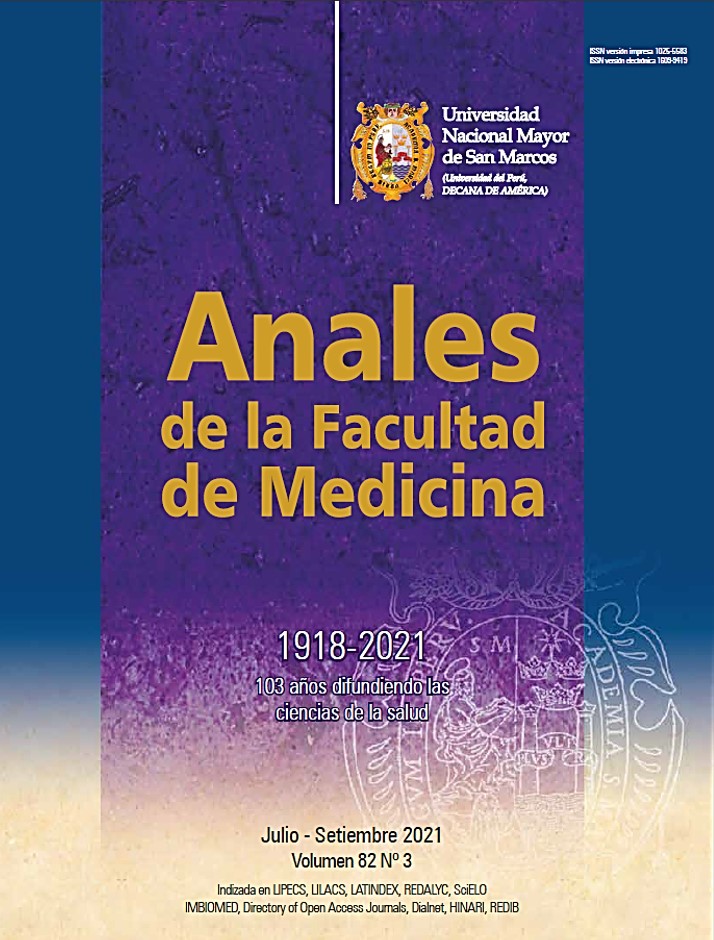The use of Remind app as a support tool in basic research teaching
DOI:
https://doi.org/10.15381/anales.v82i3.20470Keywords:
Information Technology, Educational Support, Teaching, ResearchAbstract
Objective. The main goal of this study was to determinate the relationship between the use of Remind app as a support tool and the academic performance in teaching a research course to medical students in 2020. Methods. Correlational and cross-sectional research with medical students from a private university from the basic research course. This was applied to a non-probabilistic sample made of 96 participants. A 3 dimensioned and 24 questions questionnaire was used in the Likert scale, and contains (0.94) reability. Descriptive statistics and bivariate analysis were used. Results. The average age was 23.2 ± 5.9 years old, 68.8% were female. 96.9% used the app for the first time and 72.9% considered Remind as a safe app. Academic dimension: 85% agreed with the app as it allows to send reminders of the upcoming classes. Learning dimension: 79% learned to manage their time in a better way and 77% considered it a valuable form of learning. Personal dimension: 71% agreed in using it and 69% recommends using it in other courses. 85.4% are the favorable percentile. The students that used the app, had better grades. Conclusion. The app is favorably accepted; it facilitates the learning process and is positive to students’ grades.
Downloads
Published
Issue
Section
License
Copyright (c) 2021 Anales de la Facultad de Medicina

This work is licensed under a Creative Commons Attribution-NonCommercial-ShareAlike 4.0 International License.
Those authors who have publications with this magazine accept the following terms:
- Authors will retain their copyrights and guarantee the journal the right of first publication of their work, which will be simultaneously subject to Creative Commons Attribution License that allows third parties to share the work as long as its author and its first publication this magazine are indicated.
- Authors may adopt other non-exclusive licensing agreements for the distribution of the version of the published work (eg, deposit it in an institutional electronic file or publish it in a monographic volume) provided that the initial publication in this magazine is indicated.
- Authors are allowed and recommended to disseminate their work over the Internet (eg: in institutional telematic archives or on their website) before and during the submission process, which It can produce interesting exchanges and increase quotes from the published work. (See El efecto del acceso abierto ).



